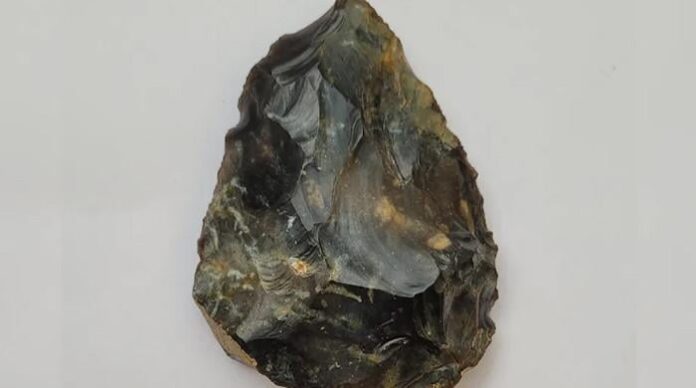A then six-year-old boy found a strange rock on a beach in Sussex, England and didn’t tell anyone for the next three years, having lost track of it. The rock has now been identified as a 50,000-year-old Neanderthal hand axe.
Curator of archaeology and social history at Worthing Theatres and Museum James Sainbury received an email from the mother of the boy named Ben about the rock, he did not expect the object to be something out of the ordinary, he told Live Science.
“I get emails like this all the time, especially about beach finds, and they’re usually just pebbles that look funny,” he said.
“But as soon as I saw the photo, I thought, ‘That’s an Upper Paleolithic Neanderthal hand axe.’ It’s an absolutely incredible find,” Sainsbury added.
The Neanderthal hand axes are relatively small and have dark two-sided flints, making them recognisable, according to the curator.
To be more specific, Sainsbury identified the artifact to be a Mousterian hand axe, meaning “it’s from that very late Neanderthal period when their days were really numbered in Europe and Britain”.
He added that according to some scholars such hand axes were made by the last generations of Neanderthals in that area.
“As far as Sussex is concerned, it’s really quite rare,” Sainsbury said.
“In our museum, we have one example and one only. They’re extremely rare because presumably the Neanderthal population density was very low,” he added.
The artifact was brought to the Worthing Museum by Ben and his family on November 24 where Sainsbury confirmed that it was indeed a Neanderthal axe.
He added that the artifact had been buried safely underwater for most of its history because of how fresh and undamaged it looked.
“It’s very unlikely it would have made it onto shore, at that height on the beach, without it being damaged,” he explained.
“So I think it was brought in with tonnes of shingles to increase the beach defences either from the English Channel, where it would have been dredged from an old riverbed that’s now submerged, or from the North Sea, in the area of Doggerland,” the curator said.
Doggerland is now an area submerged beneath the North Sea that was inhabited by prehistoric people before it was flooded by rising sea levels about 8,000 years ago.
The child, Ben, loaned the axe to Worthing Theatres and Musuem and was displayed just an hour after the meeting with Ben’s family.
